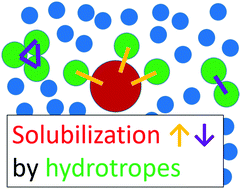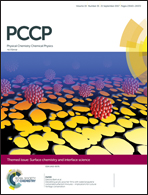Unifying hydrotropy under Gibbs phase rule
Abstract
The task of elucidating the mechanism of solubility enhancement using hydrotropes has been hampered by the wide variety of phase behaviour that hydrotropes can exhibit, encompassing near-ideal aqueous solution, self-association, micelle formation, and micro-emulsions. Instead of taking a field guide or encyclopedic approach to classify hydrotropes into different molecular classes, we take a rational approach aiming at constructing a unified theory of hydrotropy based upon the first principles of statistical thermodynamics. Achieving this aim can be facilitated by the two key concepts: (1) the Gibbs phase rule as the basis of classifying the hydrotropes in terms of the degrees of freedom and the number of variables to modulate the solvation free energy; (2) the Kirkwood–Buff integrals to quantify the interactions between the species and their relative contributions to the process of solubilization. We demonstrate that the application of the two key concepts can in principle be used to distinguish the different molecular scenarios at work under apparently similar solubility curves observed from experiments. In addition, a generalization of our previous approach to solutes beyond dilution reveals the unified mechanism of hydrotropy, driven by a strong solute–hydrotrope interaction which overcomes the apparent per-hydrotrope inefficiency due to hydrotrope self-clustering.

- This article is part of the themed collections: PCCP Perspectives, 2017 PCCP HOT Articles and Surface chemistry and interface science


 Please wait while we load your content...
Please wait while we load your content...